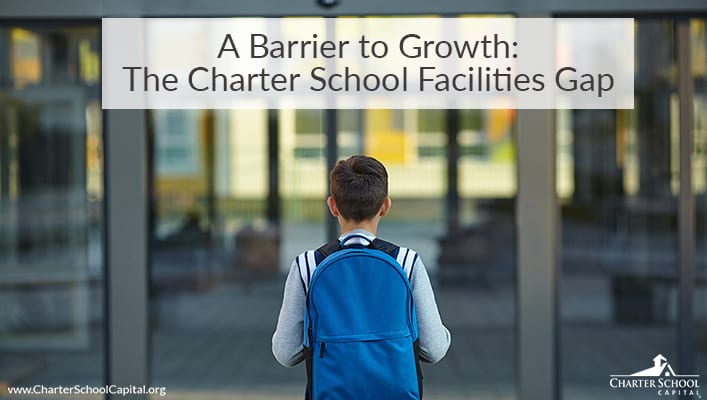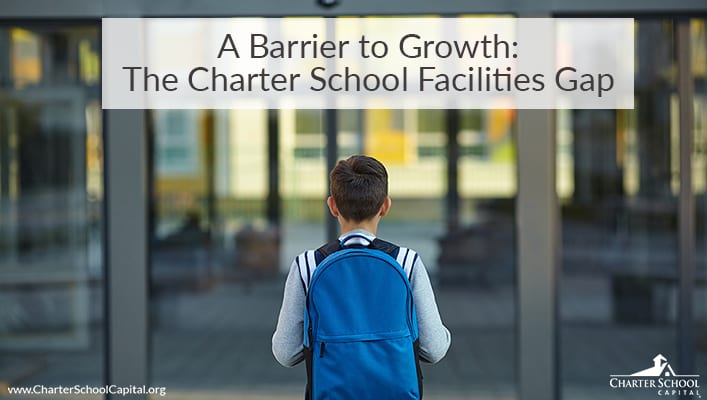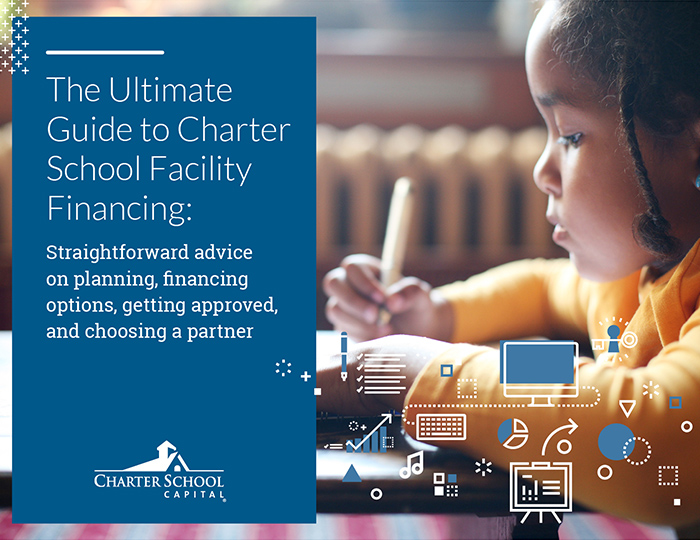A Barrier to Growth: The Charter School Facilities Gap
Editor’s Note: This content was originally published here in May by Academica Media. The charter school facilities gap is one of the biggest barriers to growth and a universal challenge for many charter schools. Listen as Ryan Kairalla from Doral College, speaks with Mark Medema, the Managing Director of the Charter School Facility Center for the National Alliance for Public Charter Schools. Whether it’s finding a facility, affording one, maintaining one, relocating because you’ve outgrown your facility, these are all common issues charter leaders face. Learn about the current state of charter school facilities across the country and what’s on the horizon to address some of these issues on a legislative level.
We think it’s vital to keep tabs on the pulse of all things related to charter schools, including informational resources, and how to support school choice, charter school growth, and the advancement of the charter school movement as a whole. We hope you find this—and any other article we curate—both interesting and valuable.
Listen to the complete podcast here or read the transcript below.
Bridging the charter school facilities gap with the National Alliance’s Mark Medema
Ryan Kairalla: Welcome to the show everybody. I’m Ryan Kairalla from Doral College. Our guest this week is the Managing Director of the Charter School Facility Center for the National Alliance for Public Charter Schools. In his role, he leads the National Alliance’s facility experts and addresses the facility policy and regulatory issues confronting charter schools nationwide. He has also worked with the Charter Impact Fund, Building Hope at the international education reform organization EdVillage and more. You can find out more about his work by visiting www.publiccharters.org.
Ladies and gentlemen, we are happy to have Mark Medema on Charter School Superstars. Hi, Mark.
Mark Medema: Hello.
Kairalla: It’s so good to be hearing from you. I’m excited to finally get to talk with a guest about facilities. That is a topic that we haven’t touched upon, and I know it’s definitely one that matters to the folks listening that are charter school advocates, charter school employees, charter school enthusiasts. So, let’s get it right into it. Can you tell the listeners a bit about the work you do with the National Alliance with the Charter School Facility Center?
Medema: Would be happy to. One of the biggest barriers to growth of charter schools these days is facilities, and as you mentioned, it’s often not talked about. Educators like to focus on education, and facilities is to say it, some people like thinking it’s like watching paint dry, and facilities, it actually is watching paint dry.
So, what we’re trying to do is bring to light some of the best practices happening for facilities, whether it’s about how school leaders and board members can develop and design and finance buildings much more affordably, or how policymakers can use public resources, whether it’s a building or state or federal funding to help lower the cost of facilities so that schools are paying more into the classroom rather than paying more money on the classroom.
Kairalla: Absolutely, and you’re so right when you say that facilities are the biggest challenges or represent one of the biggest challenges that charter schools face when building a sustainable program. I see it on the education services company side. I see it on the legal side as a lawyer. I’ve seen a lot of really otherwise successful charter schools with great models have trouble because they have issues with the actual building itself. As you noted, it can be either a problem with finding a good facility, affording that facility, maintaining that facility, getting a new facility once you’ve outgrown the old facility. Among those kind of different areas of facilities, where do you tend to see charters having the most trouble when it comes to getting a stable place to call home?
Medema: It really starts with going out and finding and developing a facility. School leaders are educational experts. They’re not commercial real estate experts, and so they’re venturing into a world that they don’t know. Commercial real estate, I think, probably doesn’t have a great brand to it to begin with, and now an educator has to figure out how to navigate an area that doesn’t really have a lot of straight ground rules and guidelines. So, they’re really in just unchartered territory for themselves.
Once they do get familiar with this, then it comes down to the cost of money. Charter schools have to borrow money at rates much higher than the government can, which is just another level of unfairness between charters and other traditional school systems, and so we need to find lots and lots of new, creative, innovative ways to bring down that cost of funds to a much more equitable level to what the traditional school systems are paying.
Kairalla: Yeah, there’s a lot about just the inherent nature of the charter model that makes facilities acquisition a challenge, or least from what I see on the legal side. You spoke about the difficulty dealing with lenders because … And I think it’s similar to the difficulty that charter schools have when dealing with landlords. These are two groups of people that look at the charter model and say, “You’re on a five-year charter maybe. This charter could succeed. It might not.” We don’t know what the political climate’s going to be, so it makes you a bigger risk either to underwrite a mortgage for or to ultimately for a landlord to want to take a chance on you, and so it does create this sort of gap. What kind of solutions have you explored with maybe your past work with Building Hope or what you do at the National Alliance that try to help bridge that gap?
Medema: There are some groups that really understand the inherent risks in charter schools much better than others. Charter schools typically will have much lower default rates, I think, than the private capital markets expect, but they just quite haven’t begun to pricing that. So, a lot of it educating the private marketplace or finding replacements for the private marketplace, and those can be through non-profit funds, which are seeded by social capital really looking for double bottom line type returns and those kind of financial returns that are much more affordable for charter schools than what the private commercial marketplace would provide.
Kairalla: And are you seeing an emergence of more of these kind of charter-friendly lenders or real estate owners or landlords as the charter model proliferates nationwide?
Medema: We’re seeing more of them. I’m not sure it’s there are tons of them still, so there’s still a huge demand. The foundations I think are stepping into this place now. They’re starting. Some of the family funds are creating their own, so not just investing in existing non-profits but creating new non-profits. So, it’s exciting to see that happen.
What we haven’t tapped into very well is the individual retail investor who would love to see their personal investments go to social good, but we haven’t really developed easy mechanisms or products for them to be able to support charter schools in their communities. I think that’s the next venture.
Kairalla: That’s a particularly interesting development because you certainly see those kind of investment vehicles in other areas of real estate space, and so perhaps if those things could emerge in the charter school field, that could be a pretty welcome development.
You spoke earlier, Mark, about policy reforms and some of the legal issues that exist maybe state by state that sort of create additional challenges for charter schools in the facility space. So, can you talk a bit about the work you do at the National Alliance to advocate at the policy level to try to make the facilities challenge easier for charter schools? Are there particular reforms that your shop is really trying to fight for?
Medema: So, we were really excited to see Idaho’s Legislature pass and the Governor pass a moral obligation bill. So, when a traditional school district borrows money, it has the backing of the state or the school district that’s in the state behind it because it has a taxing authority, so they usually are very little risk. The students who go to public charter schools are the same public-school students that should afford the same backing of the state, and a moral obligation really says the state is providing its obligation that it’ll backup a charter school’s debt. It’s not a legal, binding obligation, but it’s a moral obligation. Idaho’s now the third state to do that behind Colorado and Utah, which will see great success and great savings to schools. What-
Kairalla: Well, that’s interesting.
Medema: What the National Alliance would like to do is talk more about this and share this with more state legislators. Lots of them just never even heard of this. It’s kind of a not very well-known strategy that’s been used in affordable housing and higher ed and healthcare centers, and we want to try and spread this to more states. So, that’s one low-hanging fruit that we should be working on the next few years.
Kairalla: Well, that’s pretty interesting, and so what you’re finding is that … Are you finding that when states adopt these moral obligation bills, which as you said don’t actually require the state to step in if the charter school defaults, just having the moral obligation bill is enough to actually allow charter schools to get more attractive lending terms?
Medema: Yes. A state might have a AAA rating and so a school district can borrow at AAA rates. That’s an S&P rating methodology criteria.
Kairalla: Mm-hmm (affirmative).
Medema: A moral obligation will get you close. It might get a AA rating, which is probably 100 basis points or one full percentage point less on the interest rate. That, over a 30-year mortgage, is millions of dollars of savings to a school. That’s money that can be spent on teachers. It can create jobs. It can go into special programming, and all with no cost to the state because again, it’s not a binding obligation. Now, the states will most likely adhere to it because they don’t want the markets to know that they’re backing out on their moral obligations, but it just doesn’t get called because charter schools are really such a good risk for investors. So, it’s never been called upon in its history.
Kairalla: Yeah, really, it’s just about the state kind of just stepping a little bit with this moral obligation, and all it’s really doing is just educating the marketplace because it sort of gives people an opportunity to take a chance on charter schools. Then, they realize, well, this is actually a pretty good investment. This is a stable, commercial real estate tenant. It’s going to be there a while. It’s performing a social good in the community, and by the way, a good school in an area tends to have an effect for surrounding real estate that’s pretty positive. And so, that can be a big win all around.
Medema: And it’s not new. It started in the ’70s in New York with housing. We just hadn’t figured out how to transfer it over to the charter school sector. Now, we’re seeing more progress on that front.
Kairalla: That’s very exciting to hear. You’re actually going to be participating in the National Charter Schools Conference. You’re going to be doing a session about, surprise, facilities, and for a lot of the listeners out there who I think are hungry for more information about this and want to hear more about the developments and how they can up their facilities game, I’m sure that they want to take part. Can you tell the listeners a bit about what you’re going to talk about at the conference?
Medema: We’ll direct the audience or for two audiences. If it’s a school leader, it’s a lot about best practices from what other schools have been doing to identify property, acquire it, work with developers, secure financing. And then as for the policymakers and some of the philanthropic foundations who are looking for more systemic changes, things like these bills or including charter schools in a district’s school bond offering, which we’ve started to see around the country, there’s a handful of policy initiatives that we think should resonate and should spread from one city to another.
Medema: Again, a lot of cities don’t know about what’s happening around the country. This isn’t a topic that’s talked about very much. Again, a little bit like watching paint dry, and so we just need to figure out how to share these best practices from one city and state to another.
Kairalla: Well, let’s start talking about this, people. Facilities are super, super important. We all have to have a place to call home for our charter schools, and I’m telling you folks. I can tell you from my own experience, a solid facility, good landlord, good property owner, everything can really make a big difference for charter schools. So, Mark, I’m so grateful for the work you do at the National Alliance to help the charter schools thrive in this area.
Let me ask you this last question before we let you go, and this has been truly a pleasure speaking with you. If with a snap of your fingers, you could make any change to the education system, what change would it be?
Medema: I think it starts with a belief that all children have the potential to meet and rise to their full expectations. I think if everybody, whether they work in schools or even just the general population, really believed that they and their neighbors and their friends and people who live down the street really believed in the full potential of all kids, making these policy changes would be easy. It’d be a snap of the fingers. Everybody would know exactly what we’re doing.
I think there’s probably still some hesitancy, and we think watching students excel is sometimes an exception. And rather than exception, I think all these students are just exceptional, and I think we can all come to that realization.
Kairalla: He is the Managing Director of the Charter School Facility Center for the National Alliance for Public Charter Schools. Find out more about his work by visiting www.publiccharters.org and don’t forget to take part in the National Charter Schools Conference June 30th to July 3rd in Las Vegas. Visit ncsc.publiccharters.org.
Kairalla: Mark Medema, everybody. Mark, thank you so much for joining us this week.
Medema: Thank you very much.
Kairalla: And thank you all for listening to Charter School Superstars.
The Ultimate Guide to Charter School Facility Financing:
Thinking about a new facility for your charter school or enhancing your current one? This guide shares straightforward and actionable advice on facilities planning, financing options, getting approved, choosing a partner, and much more! Download it here.


